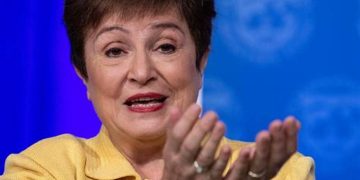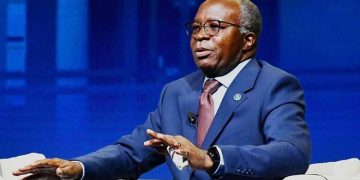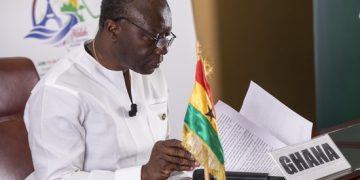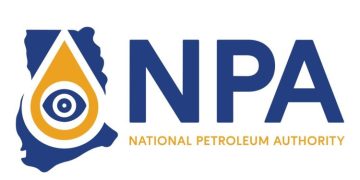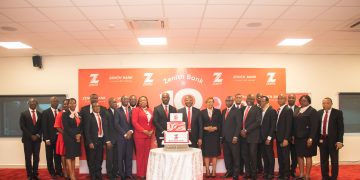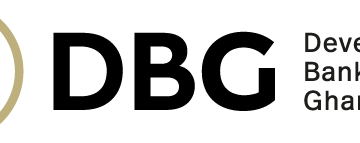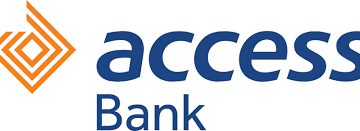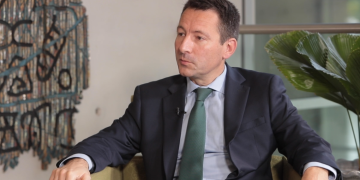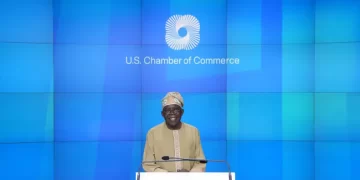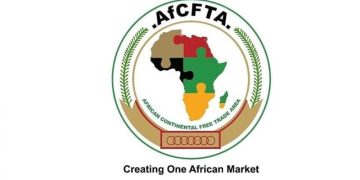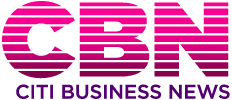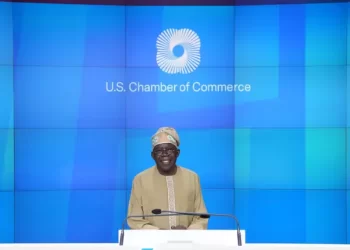Since the previous meeting of the Monetary Policy Committee (MPC) the inflation
outlook has improved. This was mainly due to the further appreciation of the rand
exchange rate following the benign market reaction to the US Fed monetary policy
tightening, as well as the significant narrowing of the domestic current account
deficit. A more positive growth outlook in the advanced economies has also
contributed to a more favourable environment for emerging markets generally.
However, the recent heightened domestic political uncertainty has reversed some of
these exchange rate gains, and the risk of further rand weakening overshadows the
inflation outlook.
Domestic growth prospects remain constrained, although the low point of the cycle is probably behind us. Demand pressures are expected to remain weak amid low business and consumer confidence.
The year-on-year inflation rate as measured by the consumer price index (CPI) for all
urban areas moderated to 6.3% in February, from 6.6% in January, in line with the
market consensus expectation. Food price inflation, which measured 10.0%,
moderated for the second consecutive month following its recent peak of 12.0% in
December. The contribution of the category of food and non-alcoholic beverages to
the overall inflation outcome declined from 1.9 percentage points in January to 1.7
percentage points in February. The Bank’s measure of core inflation, which excludes
food, fuel and electricity, measured 5.2%, down from 5.5%. This follows a recent
peak of 5.9% in December 2016.
Producer price inflation for final manufactured goods measured 5.6% in February
compared with 5.9% in January. The category of food products, beverages and
tobacco products decelerated for the sixth consecutive month to 8.4%, following its
recent peak of 13.4% in August last year.
The inflation forecast of the Bank has improved, reversing most of the deterioration
seen at the previous meeting of the MPC. Headline inflation is now expected to
return to within the target range during the second quarter of 2017 compared with
the fourth quarter previously, and to remain within the range for the rest of the
forecast period. CPI inflation is expected to average 5.9% for the year, compared
with 6.2% in the previous forecast, while the forecast for 2018 has moderated from
an average of 5.5% to 5.4%. The forecast period has been extended to 2019, with
an expected average of 5.5% for the year.
This improvement is mainly due to a more appreciated exchange rate assumption.
Despite the recent depreciation, the current level of the rand is still consistent with
the exchange rate assumption in the forecast. Although the international oil price
assumption remains unchanged, the exchange rate is expected to lead to lower
petrol price inflation, and is reflected in a downward revision to the assumption for
administered prices. This favourable trend is partially offset by a slower pace of
disinflation in food and non-alcoholic beverages, driven by an expected acceleration
in poultry prices in particular. Food price inflation is now expected to average 7.4%
and 5.2% in 2017 and 2018, compared with 7.0% and 5.0% previously.
The forecast for core inflation is marginally lower than before at an average of 5.4%
in 2017, and unchanged at 5.2% in 2018. An average core inflation of 5.3% is
expected in 2019.
Inflation expectations as measured by the Bureau for Economic Research show a
deterioration over the near-term in particular. The average expectation for 2017 has
increased from 5.8% to 6.2%, with the largest upward revisions coming from
businesses and labour respondents. The average expectation for 2018 increased
marginally from 5.8% to 5.9%, while the expected inflation for 2019 is 6.0%. By
contrast, average inflation expectations over five years declined by 0.1 percentage
point to 5.7%.
Median inflation expectations of economic analysts as reflected in the Reuters
Econometer survey conducted in March, are more or less unchanged since January.
Inflation is expected to average 5.8% in 2017, and 5.5% and 5.4% in the coming two
years, roughly in line with the Bank’s forecast. Inflation expectations implicit in the
break-even inflation rates (the yield differential between conventional bonds and
inflation linked bonds) had declined since the previous meeting, but have since
spiked following the recent depreciation of the rand, and remain above the 6.0%
level for longer-dated maturities.
The global economy shows continued signs of a broad-based improvement. The
growth outlook in the US remains favourable with business confidence indices at
high levels. However, there is growing uncertainty about the timing and size of the
expected fiscal stimulus. Tax reform may take longer than anticipated following the
recent failure to repeal the Affordable Care Act.
Growth prospects in Japan and Europe are also more promising, with the PMI
reaching a six-year high in the euro area, led by the services sectors in France and
Germany. The extent to which the sustainability of this improvement is dependent on
the highly accommodative monetary policy stance is still unclear.
The outlook for emerging markets is also more positive, in part driven by the
recovery in the advanced economies, and stronger demand in China. Firmer
commodity prices have also helped, but an oversupply of some commodities could
limit these gains.
Global inflation provides a mixed picture with the recent decline in international oil
prices threatening to reverse the broad-based increases in headline inflation in the
advanced economies. Some inflation normalisation is evident in the US and the euro
area, but Japan is showing less momentum in price and wage growth. Inflation in the
UK is expected to overshoot the target for some time, as the economy adjusts to a
weaker currency. Similarly, inflation experiences in a number of emerging economies
have reflected divergent currency movements.
The US Fed raised its policy rate in March in response to the stronger inflation trend
and improved growth outlook. While this action was widely expected, the gradual
nature of the expected interest rate cycle implicit in the forward guidance surprised
the markets. Policy rates are expected to remain at low levels for some time in most of the advanced economies until more favourable inflation and growth dynamics are more firmly entrenched.
For the past few months the rand exchange rate had been relatively resilient, along
with a number of other emerging market currencies. While most measures of
emerging market risk have narrowed over recent months, those for South Africa
have widened again over the past few days. The rand has depreciated significantly
in response to increased domestic political uncertainty and the exchange rate has reemerged
as an upside risk to the inflation outlook. Since the previous meeting of the
MPC, the rand has appreciated by 3.9% against the US dollar, by 4.0% against the
euro and by 3.4% on a trade-weighted basis.
The prospect of US monetary policy tightening had been seen as a risk to the
exchange rate. However, the rand and other peer currencies strengthened in
response to the Fed actions in March, indicative of revised market expectations of a
more moderate tightening cycle than that priced in.
The rand has also been underpinned by favourable terms of trade trends.
Furthermore, the improving trend of the deficit on the current account of the balance
of payments has reduced the perceived vulnerability of the rand to possible capital
flow reversals. However, while significant adjustment of the current account has
occurred, the deficit is not expected to remain at the level seen in the fourth quarter
of last year.
The domestic growth outlook remains weak following the negative growth recorded
in the fourth quarter of 2016. The 2016 annual GDP growth of 0.3% is likely to have
been the low point of the growth cycle, and a mild recovery is expected over the
forecast period. The Bank’s forecast for GDP growth has been revised up by 0.1
percentage points in both 2017 and 2018, to 1.2% and 1.7%, with growth of 2.0%
forecast for 2019. While growth is still expected to be below estimated potential
output growth of around 1.4% in the near term, the output gap is expected to narrow
to some extent in the later part of the forecast period. The more favourable growth
outlook is consistent with the Bank’s leading indicator of economic activity which has increased for six consecutive months.
The main drivers of growth are expected to be net exports and positive, albeit weak,
household consumption expenditure growth. Some impetus is expected to come
from fixed capital formation in the outer period of the forecast. At a sectoral level, the
agricultural sector is expected to return to positive growth following good rains in a
number of regions and improved maize crop estimates. A modest recovery in the
manufacturing sector is expected following two consecutive months of the Absa PMI
being above the neutral 50 point level, while the mining sector is forecast to respond
to more favourable commodity prices.
Low growth in gross fixed capital formation remains a downside risk to growth in the
short term. In 2016 gross fixed capital formation contracted for the first time since
2010, with the ratio of fixed capital formation to GDP declining from 20.4% in 2015 to
19.6% in 2016. Private sector investment remains particularly weak, having
contracted for five successive quarters. This is reflected in the RMB/BER Business
Confidence Index which increased marginally in the first quarter of 2017, but at 40
index points remains well below the neutral level of 50. The BER Manufacturing
survey shows a sharp decline in expected capital investment over the next 12
months, with the political climate cited as the main reason.
The constrained growth outlook does not bode well for employment creation in the
economy. According to the Quarterly Labour Force Survey, in the fourth quarter of
2016 compared to the fourth quarter of 2015, employment increased by 0.3% while
the number of unemployed grew by 11.3%. This resulted in an increase in the
unemployment rate by 2.0 percentage points to 26.5%.
Consumption expenditure by households, which grew by 0.8% in 2016 remains
subdued amid low consumer confidence. While growth of 2.2% was recorded in both
of the final two quarters of the 2016, negative retail and wholesale trade sales growth
in December and January underscore the likely persistence of this weakness. New
vehicle sales continued to decline in February, although exports increased
significantly.
These trends are expected to persist as the impact of a higher tax burden, low
employment growth and weak wealth effects take their toll on consumption
expenditure. In addition, credit extension by banks to the private sector continues to
grow at low rates, particularly to households amid a further decline in the household
debt to disposable income ratio. Expenditure will be supported to some extent by
positive but moderate real income growth.
Fiscal policy as outlined in the recent budget remains committed to a steady pace of
deficit reduction over the next three years. Lower tax revenues relative to budget –
partly a consequence of slower economic growth – have resulted in a shortfall to be
filled by a combination of lower expenditure growth, increased fuel levies and other
excise duties, and a number of tax changes. These include limited compensation for
fiscal drag and a higher marginal tax bracket for high-income earners. The tax
increases are expected to act as a drag on household consumption expenditure,
particularly for middle and upper income earners.
International oil prices have declined following increased oil inventories and weak
compliance with the OPEC-brokered deal to restrict output, and an increase in shale
gas production in the US. Although Brent crude oil prices increased by about 10% in
the wake of this agreement, these gains have been largely reversed, with oil prices
back in the region of US$50 per barrel for the past three weeks. The impact on the
domestic petrol price will be evident in April when a reduction is expected, despite
the 39 cent increase in the Road Accident Fund and fuel levies provided for in the
February budget.
Since the previous MPC meeting the inflation outlook has improved. However, the
risk to the inflation forecast has been affected by the reaction of the of the exchange
rate to the current elevated levels of political uncertainty. At current levels of around
R13.00 against the US dollar, the exchange rate is still moderately stronger than the
level implied in the exchange rate assumption in the forecast. However, the rand is
likely to react further to unfolding developments until a greater degree of certainty
and confidence is restored. The possibility of significant overshooting of the
exchange rate in the short run also cannot be ruled out. As always, the MPC will
attempt to “look through” short term fluctuations and focus on longer-term trends in
its policy settings.
The MPC remains concerned about the elevated level of inflation expectations.
While the near-term reversal was not unexpected, given the deterioration of the
short-term inflation outlook in January, the longer term expectations remain
anchored uncomfortably at the upper end of the target range.
Not all the inflation risk factors are on the upside. The deterioration in the forecast at
the previous meeting was due in part to a higher international oil price assumption.
This assumption has not been adjusted to reflect the recent market developments.
There is a downside risk to this assumption, given the possibility of these more
moderate trends persisting.
A further downside risk comes from electricity price increases, which could turn out
to be lower than the 8.0% currently in the forecast from mid-2017. The final price
determination by the energy regulator is yet to be announced.
Overall, the MPC assesses the risk to the inflation outlook to be moderately on the
upside, mainly due to the high degree of exchange rate uncertainty.
The MPC sees no evidence of significant demand pressures impacting on inflation.
The growth outlook remains disappointing, and the MPC is concerned that increased
political uncertainty could impact negatively on private sector investment and
household consumption expenditure, and further undermine employment growth.
The risks to the growth outlook are therefore assessed to be on the downside.
In light of these developments the MPC has decided to keep the repurchase rate
unchanged at 7.0% per annum. Five members preferred an unchanged stance and
one member preferred a 25 basis point reduction.
The MPC is of the view that we may have reached the end of the tightening cycle.
However the Committee would like to see a more sustained improvement in the
inflation outlook before reducing rates. This assessment may however change if the
inflation outlook and the risks to the outlook deteriorate.
–
Credit: CNBC Africa



